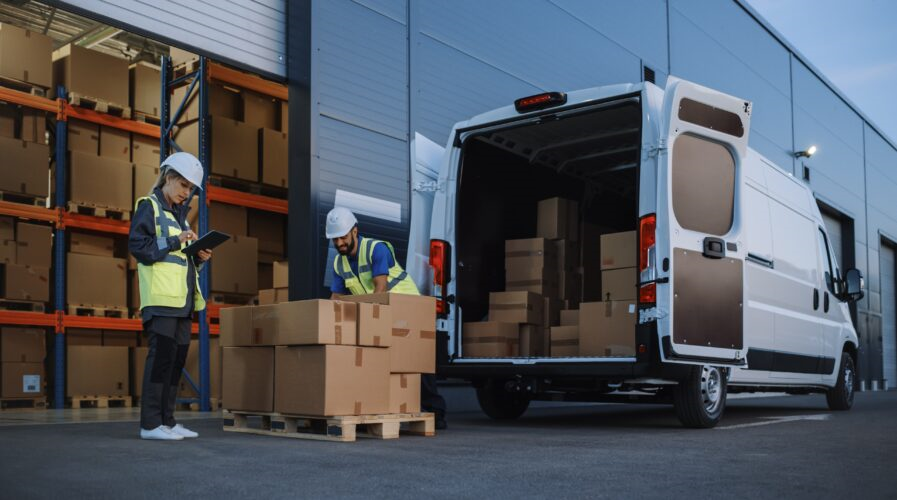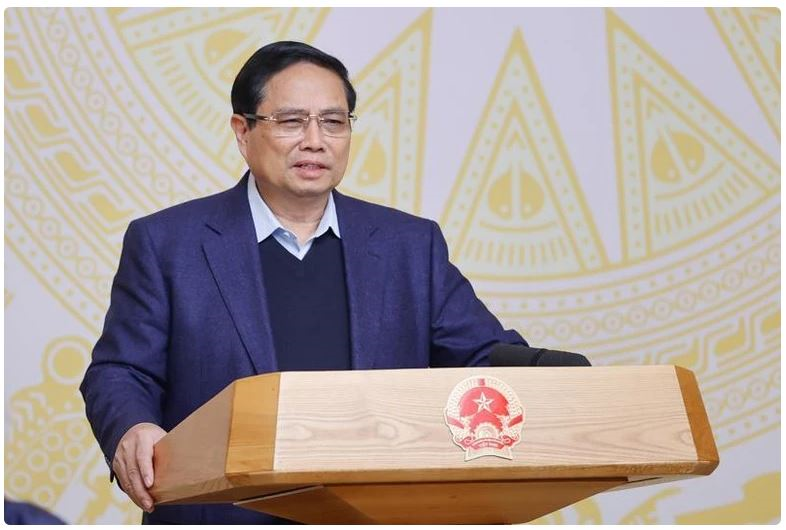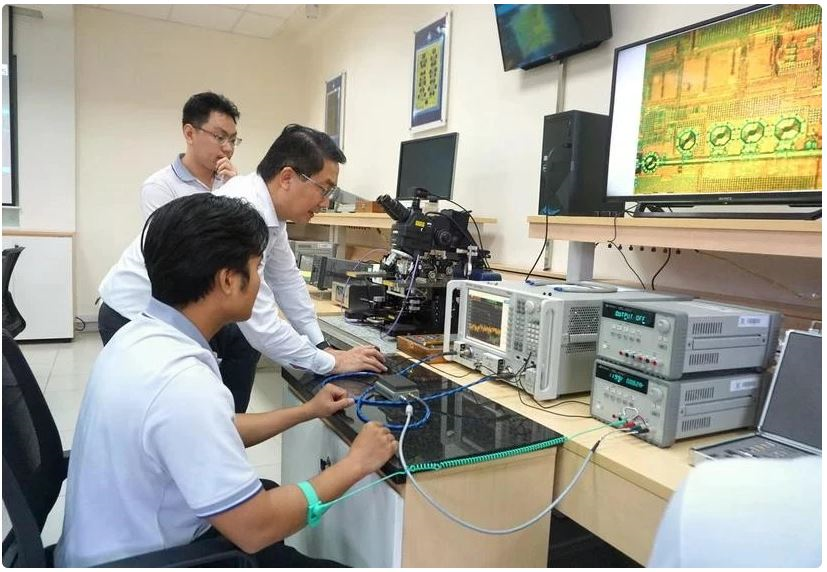-
 An outlook for the retail and logistics sector in 202327/12/2022As inflation sweeps across economies, consumer behaviors are starting to change. With price increases across all segments on the rise, households are expected to be extra cautious in their spending, opting for products that can stretch their dollars. In 2023, it would be even more important for businesses to ensure products that are aligned with customer demands and able to deliver long-term value and durability.
An outlook for the retail and logistics sector in 202327/12/2022As inflation sweeps across economies, consumer behaviors are starting to change. With price increases across all segments on the rise, households are expected to be extra cautious in their spending, opting for products that can stretch their dollars. In 2023, it would be even more important for businesses to ensure products that are aligned with customer demands and able to deliver long-term value and durability.
An integrated planning strategy, grounded in strong product lifecycle management (PLM) approaches, can help.
Sustainability will take center stage
Building sustainability from the get-go
In a recent McKinsey survey, 67% of respondents consider the use of sustainable materials to be an important factor impacting their purchase decisions. As such, we are likely to see fashion brands sourcing more sustainable materials, like Mylo and Piñatex, and providing greater levels of transparency and traceability across their extended supply chain in 2023. Additionally, the materials, processes, and production techniques of new collections will be better measured and designed to have lower environmental impact scores.
Extending the product lifecycle
Wastage is another issue dominating conversations in the fashion and retail industry. Currently, many products created by the fashion industry end up in landfills at the end of their life cycle, and products may also be thrown out prematurely due to wear and tear. However, the increasing scrutiny and spotlight on sustainability practices will lead more brands to consider how they can extend the lifecycle of their products in 2023.
Brands could, for instance, explore avenues such as offering repair, rental, resell, and recycling services rather than introducing new products to market. Integrating with resell platforms could also help with the sale of leftover stock while extended services for products after sale can help extend the lifetime of an item.
Rethinking resilience across supply lines
Although it appears the worst of supply and logistics chaos has abated, uncertainties surrounding the ongoing geopolitical conflict, port congestions and delays, surges in shipping, and high freight costs remain. As such, many brands will need to rethink their supply networks — decentralizing and distributing their operations across local, regional, and even international lines. Such a strategy will reduce exposure and vulnerability to global shocks. With greater agility and resilience built into their supply chain distribution, businesses can better adapt to changing market demands. Strategically placing distribution structures across various locations, also allows retailers to bring their products closer to end users and streamlining efficiencies in their delivery to customers.
To this end, technology will play a key role in enabling organizations to gain real-time visibility and insight across their supply lines. Digital supply chain platforms, for instance, allow brands and retailers to connect and communicate with suppliers on order demands, quantities, and dates. Businesses can also track their inventory, products, and goods in motion, and forecast potential delays or disruptions to shipments — all in real time. These capabilities can provide a competitive advantage for retailers, as it empowers them with data-driven insights into their end-to-end operations, and allows them to adopt a proactive, rather than reactive, approach to any changes in the market.
Small retailers scale use of tech to drive customer experiences and engagement
In recent years, we have seen a major shift as brands move beyond merely pushing products, to adopting omnichannel retail strategies and creating enriching, interactive brand experiences to engage customers. These experiences range from the launch of hot pink Jimmy Choo cafés in Seoul and London to Gucci’s Circolo interactive brand house — comprising a café, bookstore, and even an immersive Listening Lounge.
While many of these experiences have been led by luxury houses, not all brands have the resources to explore out-of-the-box activations and customer experiences. As a result, brands will need to invest in greater use and integration of technologies, such as automation, to drive new efficiencies across their day-to-day processes. This frees up workforces to focus on higher value, strategic priorities for the brand, such as creating memorable and unique experiences for customers.
In this regard, artificial intelligence, predictive, and machine learning-driven services can help engage customers across the purchasing journey — providing personalized insights tailored to customers’ lifestyle needs, and opportunities for engagement across various consumer touchpoints. Ultimately, 2023 will see more brands leverage technology as a powerful tool to their advantage, to help increase brand exposure, top-of-mind brand recall, and drive competitiveness in a saturated retail market.
Nguồn: Tech Wire Asia
-
 Vietnam harnesses AI to transform public services27/03/2025The Government is accelerating AI application to reduce the paper workload and improve operation efficacy.
Vietnam harnesses AI to transform public services27/03/2025The Government is accelerating AI application to reduce the paper workload and improve operation efficacy. -
 Government steering committee set up to drive Vietnam’s sci-tech, innovation development18/03/2025It is tasked with studying and proposing the Government and the PM national strategies, policies, and solutions for developing science, technology, innovation and digital transformation. Besides, it is in charge of overseeing the implementation of project No. 06 on developing the application of population data, identification, and e-authentication data, as well as administrative reform efforts.
Government steering committee set up to drive Vietnam’s sci-tech, innovation development18/03/2025It is tasked with studying and proposing the Government and the PM national strategies, policies, and solutions for developing science, technology, innovation and digital transformation. Besides, it is in charge of overseeing the implementation of project No. 06 on developing the application of population data, identification, and e-authentication data, as well as administrative reform efforts. -
 Innovation – breakthrough path for Vietnam’s development: experts10/03/2025Experts in Singapore believe that innovation represents a breakthrough path for Vietnam, which is advancing to the new era - that of the nation's rise.
Innovation – breakthrough path for Vietnam’s development: experts10/03/2025Experts in Singapore believe that innovation represents a breakthrough path for Vietnam, which is advancing to the new era - that of the nation's rise. -
 Decisively cutting administrative procedures to facilitate businesses’ operations06/03/2025During a recent working session with representatives of the Party Central Committee’s Commission for Policies and Strategies, Party General Secretary To Lam urged greater efforts to position Vietnam's investment environment among the top three in ASEAN within the next two to three years.
Decisively cutting administrative procedures to facilitate businesses’ operations06/03/2025During a recent working session with representatives of the Party Central Committee’s Commission for Policies and Strategies, Party General Secretary To Lam urged greater efforts to position Vietnam's investment environment among the top three in ASEAN within the next two to three years. -
 Vietnam urged to seize digital transformation opportunities21/02/2025Experts highlighted a young population, the Government's support, and a thriving startup ecosystem are driving the country’s innovation.
Vietnam urged to seize digital transformation opportunities21/02/2025Experts highlighted a young population, the Government's support, and a thriving startup ecosystem are driving the country’s innovation.


